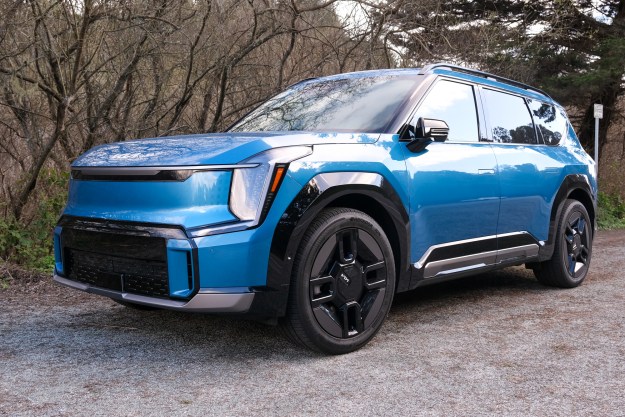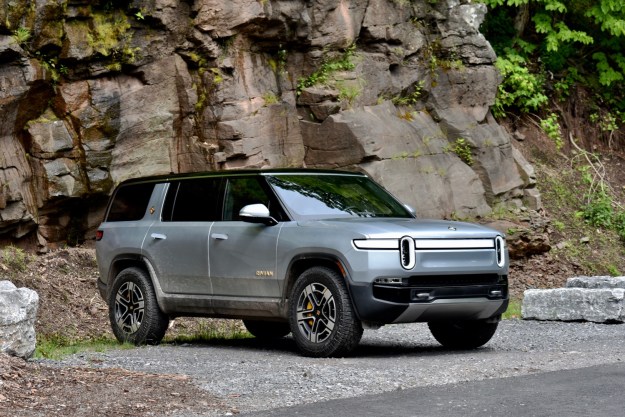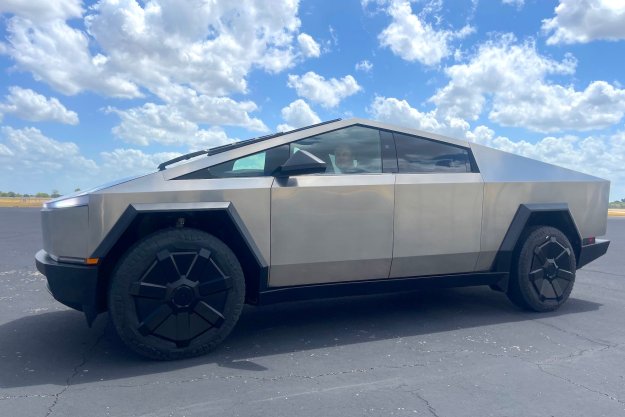Stylish, powerful, and fun, the latest NSX delivers on its performance promises. But the price and a bundle of quirks keep it from being great.
It’s official: There’s a 90s culture resurgence happening, and we’re all caught in its undertow. From a new Full House and X-Files to a reboot of Doom, our heartstrings of nostalgia are being plucked like the opening guitar riff to Beverly Hills 90210. It’s fitting then, that the long-awaited second-generation Acura NSX is hitting the open road this year. Anyone looking for a throwback experience will be surprised, however: This car is all about the future.
Here comes the hotstepper
“Finally.” This was the only appropriate utterance I could make as I approached the 2017 Acura NSX, which sat primed and ready in the pit lane. The Thermal Club in Palm Springs, California sounds like a swanky Russian bath house, but it’s actually an exclusive track just outside of the quiet desert town. This would be where I would get my hands on the car that was seemingly willed into existence after fans old and new alike were awed by the concept at the 2012 Detroit Auto Show.
Powered primarily by a 3.5-liter twin turbocharged six-cylinder engine, the mid-mounted power plant gins up 500 horsepower on its own. This is supplemented by a direct drive motor on the crankshaft and a front twin motor unit. When it’s running at full steam, the NSX hybrid system puts out 573 horsepower and 476 pound-feet of torque. This is routed through a nine-speed dual clutch transmission and managed through all four wheels by the automaker’s Sport Hybrid AWD system.
Who does retro anymore?
With all that’s new in the 2017 NSX, there is much that is familiar. Though now a hybrid, the NSX remains a mid-engined sports coupe designed to challenge the status quo of the sports experience. Its design is a far cry from the elder Acura as the sharp, angular lines of the coupe are exactly how we’d imagine a futuristic sports car. There’s still a family resemblance to be found, however, such as in the side intakes — they’re like instantly recognizable hereditary dimples.
To satisfy performance and the cooling demands of the hybrid powertrain, the exterior was crafted with a deep focus on airflow. Ten heat exchangers throughout the body are all necessarily functional, channeling air through the front, out the hood, over the top, through the wheels, and across the flat bottom, regulated by a rear diffuser. In English, this translates to three times the downforce on the rear as there is on the front, for optimum performance driving.
Remix track
Taking on the Thermal Club test track starts with a display of what the three electric motors bring to the table. With a twist of a dial and my left foot planted on the brake, launch control is engaged, holding steady at around 2,300 rpms. In any other car, this would be the fastest route to stall city, but here, the instant torque of the direct drive motor does most of the initial gruntwork, and the NSX claps forward with little ceremony. No wheel spins or dramatic displays of prowess, just a clean “whoosh” and it’s off.
I feel like I can kick the tail out, but I’ve still got plenty of feedback to gauge where the limit is.
With track mode engaged, the NSX has stability control muted, its magnetorheological dampers fully firmed, and power delivery is maximized from both systems. In a straight line, pushing the pedal to the floor commits both combustion and electric power to forward acceleration. As part of the NSX’s Sport Hybrid AWD, the twin motor units in front work to maximize control when cruising through the bends. This allows the twin-turbo V6 to lay all its power down to the rear, uninterrupted, while the motors balance out the torque and yaw of the car.
I’m increasingly confident in how the NSX handles with each lap, but I’m slow to trust the Direct Yaw Control, the coupe’s torque-vectoring system. A direction comes from the NSX team to tuck the car deeper into the apex of a turn and apply more throttle much earlier than my instincts say to. This is the “trust fall” of the automotive world. To its credit (and to my relief), giving the yaw control a chance pulls the car tightly around the bend, rocketing it out and freeing me to dial on the power quickly on the exit.
There’s enough focus on putting power to the rear that I don’t have to worry about the AWD muddying the experience with understeer. In fact, coming out of the turns, I feel like I can kick the tail out, but I’ve still got plenty of feedback to gauge where the limit is through corner exits and respond accordingly. Within this wide margin of control, the NSX can be utilized to its full potential for faster lap times, but if I want to drive it ham-fistedly for fun, the car doesn’t scold me for doing so. Throughout it all, the nine-speed double-clutch transmission is exemplary, keeping me in high gear when I need it to be and shifting faster than I have time to even think about it. There are indeed paddles, but they’re best left alone.
2K Compliant?
Leaving the track allows me to focus on the day-to-day aspects of the NSX, such as the interior. It was conscientiously designed to be light on the bling to reduce driver distraction, and there’s a clear emphasis on making the environment performance-friendly for the driver. The steering wheel, for instance, incorporates pistol-like grips on the inside of the “nine-and-three” positions, giving drivers an extra chunk of wheel to hold on to through turns. Additional padding for the knees make it so lateral driving isn’t leg-battering.
The nine-speed transmission shifts faster than I have time to even think about.
On the whole, it works, there’s just a smattering of odd choices (like piano-black plastic) that raise an eyebrow. Take the driver-centric Dynamic TFT gauge cluster, for example, which on the whole is intuitively designed, delivering practical data though all the different driving modes. This is where the Integrated Dynamics System (IDS) displays which mode I’m in and which systems are affected. Each have their own color and, when I’m in a situation where the road ahead demands my attention, the tachometer will light up with a distinct color to convey where I’m at in the revs.
But that seems to be the extent of the experience. Beyond that, there’s the standard Honda/Acura seven-inch capacitive touchscreen display. There’s nothing particularly wrong with this, as it displays map, media, and phone info dutifully. The issue is that, with the NSX, you’d think you’d get a touch more, like some “track apps” to measure your performance. What’s more, the IDS can’t be custom configured outside of the presets, so if I prefer to max out the throttle response but keep the steering and suspension soft, I’m out of luck.
The seats are comfortable enough, but lack any upward or downward adjustments, or any bolster tweaking for broad-shouldered pilots. All of this would be par for the course if they were fixed, pre-molded race seats.
Conclusion
Driving the Acura NSX on twisty backroads is exactly the dream you’d imagine it is, with the car providing fun and control through each kink while twisting the necks of all who behold it. However, after some time, a few small things begin to add up. Acura engineers admit to piping in the engine sounds, but it’s at least rerouted naturally and not played through the speakers. This is great for feedback, but even in the car’s “quiet” setting, the waste gate and induction sounds are constantly clunking behind my ear. I find mechanical sounds just as endearing as the next guy, but there’s an overall lack of elegance in this car’s execution.
This type of execution would ultimately be forgivable if it wasn’t for the asking price. Starting at $156,000, the NSX can go well past $200,000 with just a few additional options. This puts it square in the Audi R8’s firing line, which accomplishes much of what the NSX looks to do, but with much more refinement. Was the second generation NSX worth the wait? Most certainly, but the collection of kinks in this very good car means we’ll have to wait just a little longer for the NSX to be great.
Highs
- Striking, modern styling. Looks like a concept car
- Can be playful and serious on the track
Lows
- Drives like a concept car
- Unrefined performance for what it promises
- Substantial asking price makes small gripes less forgivable







